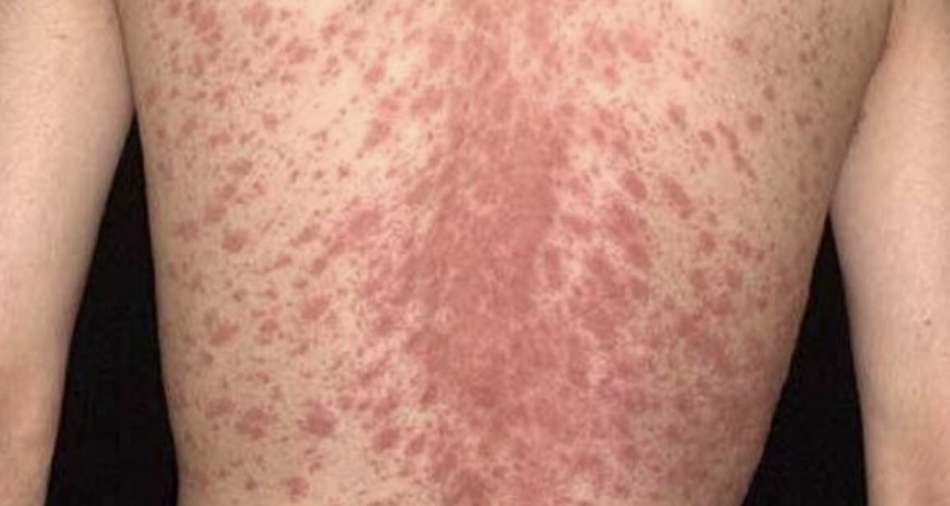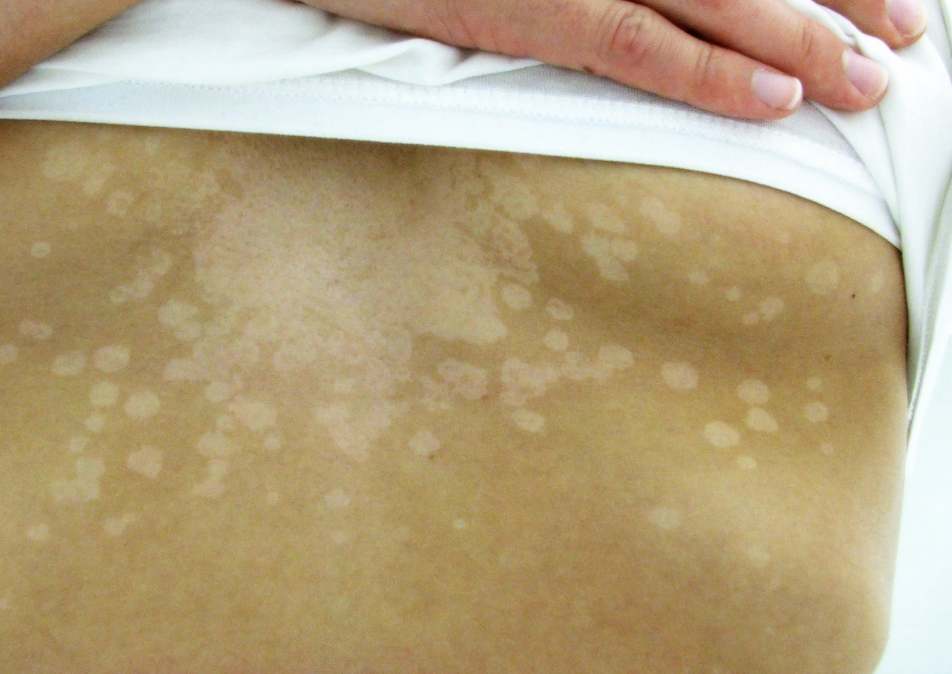Understanding and Managing Toddler Head Banging
September 15, 2023Pediatric Immune Thrombocytopenia (ITP)
October 26, 2023Understanding Skin Conditions: Pityriasis Rosea vs. Tinea Versicolor
Your skin is your body’s largest organ, and it can sometimes throw surprises your way. From the occasional pimple to more complex issues, understanding what’s happening on the surface can be a bit like deciphering a secret code. Two common skin conditions that often leave people scratching their heads, quite literally, are Pityriasis Rosea and Tinea Versicolor. These dermatological dilemmas may share some similarities, but they are distinct conditions that require different approaches to diagnosis and treatment.
I. Understanding Pityriasis Rosea

- Definition and Characteristics
Pityriasis Rosea is a dermatological condition characterized by a herald patch, a single, slightly raised, red or pink lesion, usually found on the chest, back, or abdomen. What makes Pityriasis Rosea truly unique is its “Christmas tree” pattern of smaller, scaly, oval, or round patches that radiate out from the herald patch. This pattern is often likened to the branches of a conifer tree, hence the nickname. - Signs and Symptoms
The exact cause of Pityriasis Rosea remains uncertain, but it’s believed to be triggered by viral infections, particularly the human herpesvirus 6 and 7 (HHV-6 and HHV-7). While it can affect individuals of all ages, it’s most common in adolescents and young adults.Signs and Symptoms can include:- Herald Patch: The first sign is typically the herald patch, which can be mistaken for a ringworm lesion.
- Secondary Rash: smaller patches develop over a week or two, spreading across the trunk and sometimes the arms and legs.
- Mild Itching: Itching is a common symptom
- General Malaise: Some individuals may experience mild fever, fatigue, or sore throat in the days leading up to the rash’s appearance.
- Diagnosis and Treatment
Diagnosing Pityriasis Rosea is primarily based on clinical observation. However, in some cases, a skin biopsy or other tests may be conducted to rule out other conditions with similar symptoms. Treatment for Pityriasis Rosea primarily focuses on relieving discomfort and managing itching, which may include:- Topical Steroids: Over-the-counter or prescription-strength creams or ointments
- Antihistamines: These can be taken orally to reduce itching and discomfort, especially if the itching is severe.
- Moisturizers: Applying moisturizing creams or lotions can soothe dry, scaly skin.
- Phototherapy: In some cases, ultraviolet (UV) light therapy may be recommended.
It’s important to note that Pityriasis Rosea is typically self-limiting and tends to clear up on its own within 6-8 weeks. However, if you suspect you have Pityriasis Rosea or are experiencing severe symptoms, it’s essential to consult a healthcare professional for an accurate diagnosis and appropriate treatment guidance.
II. Exploring Tinea Versicolor

- Definition and Characteristics
Tinea Versicolor, also known as pityriasis versicolor, is a common fungal skin infection caused by the yeast Malassezia furfur. This condition is characterized by the development of small, discolored patches on the skin, which can vary in color from white to pink to light brown, depending on your skin tone. Unlike Pityriasis Rosea, Tinea Versicolor doesn’t typically have a distinct rash pattern but instead presents as multiple scattered patches. - Causes and Risk FactorsCauses and Risk Factors include:
- Yeast Overgrowth: Tinea Versicolor occurs when the yeast Malassezia furfur, which naturally resides on the skin’s surface, starts to overgrow.
- Humid Climates: It is more common in regions with high humidity and warm temperatures.
- Oily Skin: Excessively oily skin provides a suitable environment for yeast growth.
- Sweating: Increased perspiration can contribute to the development of Tinea Versicolor.
- Immunosuppression: Individuals with weakened immune systems, such as those with HIV/AIDS, are at a higher risk.
- Signs and Symptoms:
- Skin Discoloration: Patches of a lighter or darker color than the surrounding skin.
- Itching: Some people may experience mild to moderate itching or discomfort.
- Scaling: The patches may have a fine, powdery scale, especially when scratched.
- Worsening in Heat: Symptoms may worsen in hot and humid weather.
- Diagnosis and Treatment
Diagnosing Tinea Versicolor typically involves a combination of a physical examination and, if necessary, additional tests. Physical exam – a physician will inspect your skin, looking for characteristic patches and noting their appearance. Wood’s Lamp exam, in some cases, may be used to highlight the affected areas, making them more visible. Skin scraping may be taken and examined under a microscope to confirm the presence of the yeast responsible for Tinea Versicolor.
III. Treatment:
-
- Topical Antifungal Medications are first-line treatment options and include creams, lotions, or shampoos containing antifungal agents like ketoconazole, selenium sulfide, or ciclopirox.
- Oral Antifungal Medications for severe or widespread cases
- Maintaining Good Hygiene: Regularly washing with an antifungal soap and ensuring your skin is thoroughly dry can help prevent recurrence.
- Preventative Measures: For individuals prone to Tinea Versicolor, using antifungal shampoos as body wash once a month can help prevent reoccurrence.
It’s important to remember that while treatment can clear the existing rash, Tinea Versicolor can recur, especially in humid conditions.
In conclusion, understanding the difference between Pityriasis Rosea and Tinea Versicolor is essential for anyone dealing with skin concerns. While both conditions may share the stage with itchy rashes, they have distinct characteristics, causes, and treatments. Nevertheless, regardless of the specific skin issue, consulting a healthcare professional is crucial for an accurate diagnosis and tailored treatment plan.
